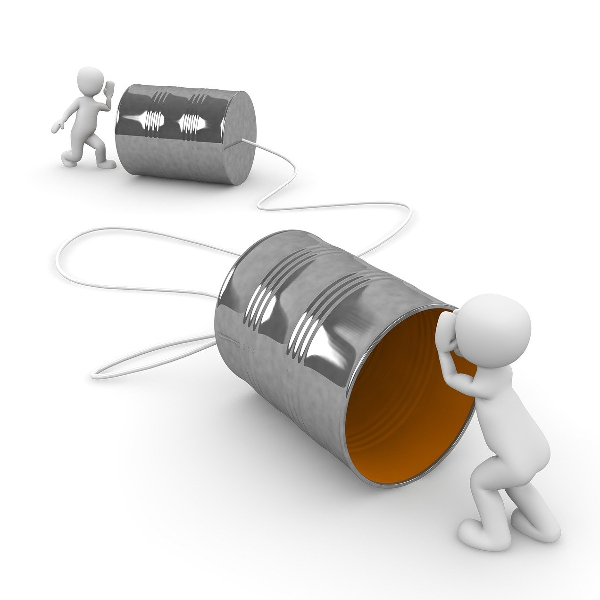
Mastering Communication Skills: Strategies to Overcome the Challenge of Expressing Yourself Clearly and Understanding Others
Introduction 2
Active Listening 3
Avoid interrupting or jumping to conclusions prematurely: 5
Reflect on what the speaker is saying and paraphrase to ensure understanding 6
Ask clarifying questions to fill any gaps in your comprehension 8
Improve Verbal Expression 10
Practice Articulation 12
Use Visual Aids 14
Seek Feedback 16
Non-Verbal Communication 18
Maintain Good Posture 18
Facial Expressions 19
Gestures 20
Tone of Voice 22
Seek Clarity and Ask Questions 24
Paraphrase 24
Seek Examples 25
Encourage Open Communication 26
Seek Professional Development Opportunities 28
Conclusion 28
Introduction
Listen to the Audiobook "taster" HERE
Effective communication is an essential skill in both personal and professional spheres of life. However, not everyone possesses the natural ability to express themselves clearly or to understand others effortlessly. If you find yourself struggling in these areas, you are not alone. Many people face similar challenges but with conscious effort and practice, you can enhance your communication skills and foster better connections with others. In this article, we will explore strategies and techniques to overcome the weakness of unclear expression and misunderstanding others.
Active Listening
Active listening is a fundamental aspect of effective communication. It involves more than just hearing the words that someone is saying. It's about understanding the complete message being sent, both verbally and non-verbally. Active listening can help individuals with personality disorders to better understand and connect with the people around them, thereby overcoming their fears related to social interactions.
One of the key techniques in active listening is maintaining eye contact. This is not about staring intently, but rather about showing the speaker that you are fully engaged in the conversation. Eye contact signals to the speaker that you are focused on their words and that you value what they have to say. It's a non-verbal way of saying, "I am here with you, I am listening, and I care about what you're saying."
Non-verbal cues are another crucial part of active listening. These can include nodding your head to show agreement or understanding, leaning in slightly to show interest, and using facial expressions to respond to the speaker's emotions. These cues can reassure the speaker that their message is being received and understood.
Practical, Real-World Examples:
1. In a work setting, active listening can be used during team meetings. If a colleague is presenting a new idea, maintaining eye contact and providing non-verbal cues such as nodding can show that you are engaged and value their input. This can foster a more collaborative and respectful work environment.
2. In a personal relationship, active listening can be used during difficult conversations. If a partner is expressing frustration or disappointment, maintaining eye contact and responding with appropriate facial expressions can show empathy and understanding, even before you verbally respond.
3. In a therapeutic setting, individuals with personality disorders can practice active listening with their therapists. This can help them to better understand their own emotions and thought processes, as well as to develop empathy for others.
4. In everyday interactions, such as ordering coffee at a café or asking for directions, active listening can ensure that you understand the information being given to you, and can also make the other person feel valued and respected.
In conclusion, active listening is a powerful tool for improving communication and overcoming fears related to social interactions. By practicing these techniques, individuals with personality disorders can enhance their relationships and navigate social situations more confidently.
Avoid interrupting or jumping to conclusions prematurely:
Interrupting others during a conversation can hinder effective communication and make the speaker feel disregarded. By restraining the impulse to interrupt, you create a safe space for the other person to express themselves fully. Instead of immediately jumping to conclusions or assumptions, give them the opportunity to articulate their thoughts and feelings without interruption. This shows respect and genuine interest in what they have to say.
Real-world examples:
a) In a work setting: During a team meeting, your colleague is presenting a new project idea. Instead of interrupting them to voice your opinion or offer immediate feedback, patiently listen to their entire presentation. Allow them to complete their thought process before sharing your insights or asking questions. This not only helps you understand their perspective better but also encourages open and collaborative communication within the team.
b) In a personal conversation: You're having a discussion with a close friend about a sensitive topic. As they share their experiences and emotions, it's important to refrain from interrupting with your own stories or judgments. By actively listening and avoiding premature conclusions, you create a supportive environment where your friend feels heard and understood. This can foster stronger connections and trust in your relationship.
c) In a conflict resolution scenario: When resolving a disagreement or conflict with someone, interrupting them or jumping to conclusions can escalate tensions. Instead, practice active listening by allowing the other person to express their concerns fully. This demonstrates your willingness to understand their perspective, which can lead to a more productive and empathetic conversation. By avoiding premature conclusions, you may uncover underlying issues or find common ground for resolution.
Remember, effective communication is.......................
Listen to the Audiobook "taster" HERE
Read the rest of this and 32 other “Coping Strategy Handbooks” & their associated Audio Books in the Members area HERE